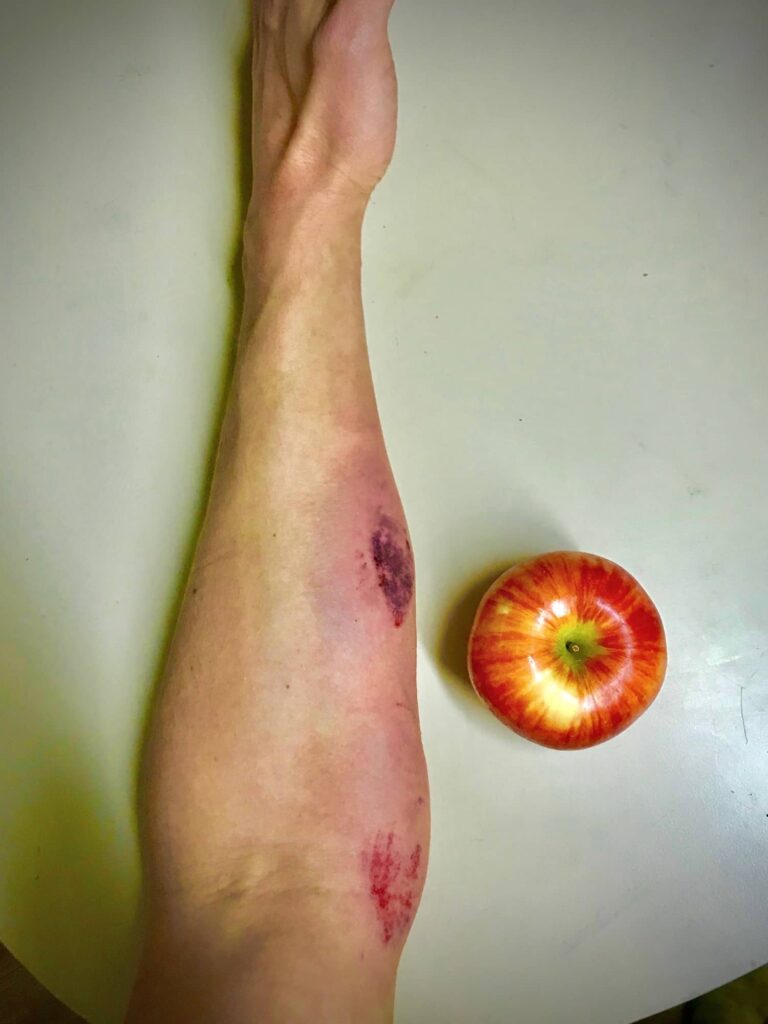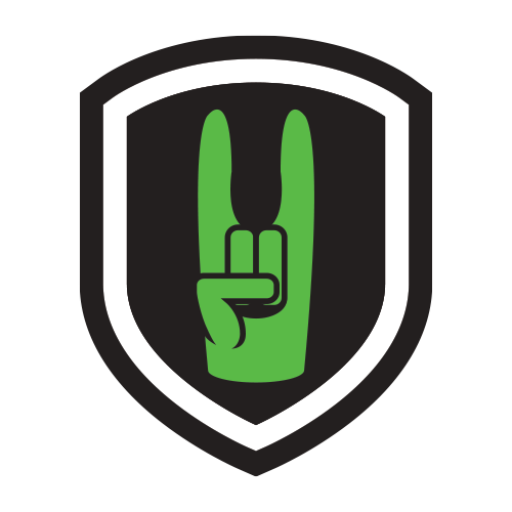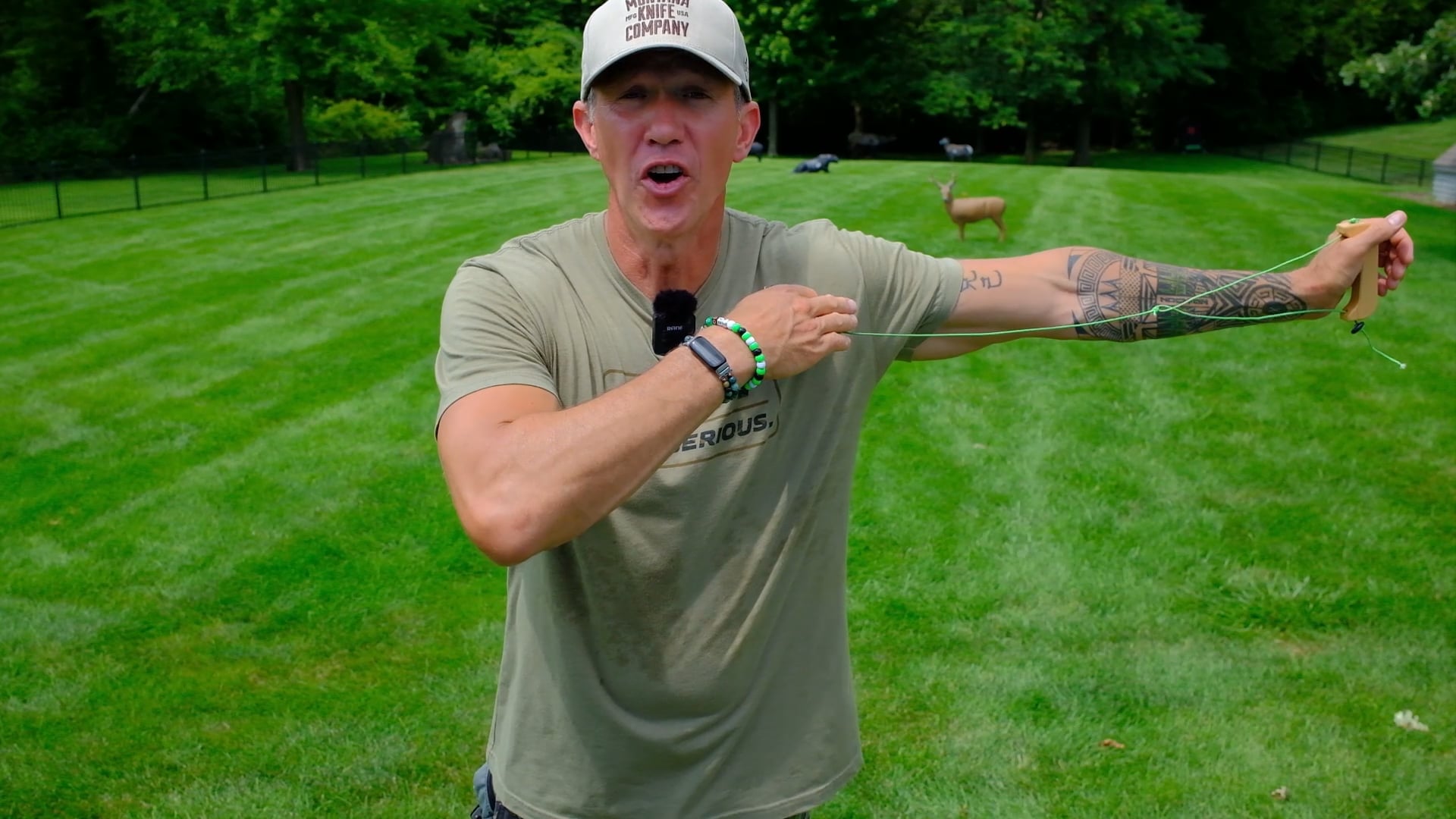I’ve coached countless archers who lock out their bow arm to create stability. It never goes well. Their accuracy and consistency suffer as pain develops in their elbow and shoulder.
Front arm mechanics affect your string clearance, injury prevention, and even the power that transfers through your shot. After decades of competitive shooting and teaching, I’ve found that a properly positioned “soft elbow” is the foundation of consistent accuracy.
Let me walk you through why this detail makes such a difference in your shooting and how to position your front arm for maximum performance and longevity.
The Problems With a Locked Elbow
When archers lock out their front arm (creating that hyperextended, straight position), they dramatically reduce string clearance.
With a locked elbow, the forearm rotates inward into the string path. I’ve seen this cause problems ranging from inconsistent arrow flight to painful string slap that leaves welts on your forearm, even with a properly fitted arm guard.
Just like this…

That locked position also places tremendous stress on your joints and connective tissue. Like a boxer hyperextending their punch over and over, you’re setting yourself up for tennis elbow, pitcher’s elbow, and shoulder impingement over time.
The mechanics worsen under tension. When your elbow is locked and you pull hard against the wall, your humerus (upper arm bone) naturally creeps up toward your neck as the shoulder rises.
This creates compression in the shoulder joint that leads to long-term pain. I’ve worked with countless archers who developed chronic shoulder problems from years of shooting with a locked front arm.
Perhaps worst of all is what happens at the shot: that rigid, locked position gives you zero ability to absorb shock. When the bow fires, that energy transfers into your joints instead of being dampened by the natural give in your arm.
It’s like driving a car with no shock absorbers. Every bump hammers the frame.
The Secret to Perfect Front Arm Position: The Thumb
The front arm position involves more than just how much bend you have in your elbow. Proper rotation of the entire arm starts with your thumb.
Think of a clock face. For proper positioning, point your thumb toward two o’clock (if you’re right-handed). This thumb position naturally rotates your elbow to point toward eight o’clock, down and away from the string path.
Picture an arrow running from the IV vein in your arm (the one they draw blood from) straight through to the tip of your elbow. When positioned correctly, that imaginary arrow would point to eight o’clock at your elbow and exit at your thumb around two o’clock.
This position:
- Creates maximum clearance for the string
- Seats your shoulder blade properly against your back
- Prevents the shoulder from creeping up during the draw cycle
- Gives you natural shock absorption when the bow fires
The moment your thumb rotates upward (toward 12 o’clock), your form changes. The elbow rotates inward into the string path. Your ability to lock out increases dramatically, which eliminates your natural shock absorption.
Executing the Perfect Shot Cycle
The secret to maintaining proper front arm position is establishing it before you begin your draw, not trying to adjust it under tension. Here’s my step-by-step process:
- Start with the proper grip. Position your hand with the thumb at that two o’clock position before you even raise the bow.
- Raise to target with arm already in position. Your front arm should already be slightly bent with the elbow appropriately rotated.
- Draw until the bow stops. Pull the string back to your anchor point without changing your front arm position.
- Execute the shot. As you release, the bow should naturally fall forward, with your slightly bent elbow absorbing the shock.
During this process, my elbow position never changes. If you’re adjusting your elbow at full draw, you’ve already created a problem that’ll affect your accuracy and eventually lead to pain.
This approach works whether you’re shooting a lightweight target bow or a fully equipped hunting setup. In fact, if you find yourself needing to lock out your arm to support your bow, you have too much weight (likely in your stabilizer system) for your strength level.
Reducing weight until you can maintain proper form will improve your accuracy, not hurt it.
The Long-Term Benefits of Soft Elbows
Adopting proper front arm mechanics delivers immediate benefits:
- Cleaner arrow flight because of eliminated string interference
- More consistent accuracy from shot to shot
- Reduced fatigue during long practice sessions
- Prevention of common elbow and shoulder injuries
For female and younger archers, proper form is critical. Delicate tendons and joints are especially susceptible to damage from hyperextension. I’ve seen too many promising young archers develop “rainbow elbows” from years of improper form, which can be difficult to correct once established.
For double-jointed archers, pay extra attention to your front arm position. Your natural flexibility makes it extremely easy to lock out, but that same flexibility increases your risk of joint damage over time.
Soft Elbows Equal Big-Time Groups
Proper front arm position is often the missing link between inconsistent shooting and tight, consistent groups. The soft elbow approach I’ve outlined here has improved countless students’ accuracy and extended their shooting careers by preventing common injuries.
Remember to:
- Keep your thumb at two o’clock to properly rotate your elbow out of the string path
- Establish proper position before raising the bow, not during or after the draw
- Let your arm absorb shock naturally with a slight bend
- If you have to lock out to hold your bow steady, reduce your bow’s weight
Make these adjustments to your form to achieve tighter groups and enjoy pain-free shooting for years to come. Soft elbows equal big-time groups.






 massmonopoly
massmonopoly